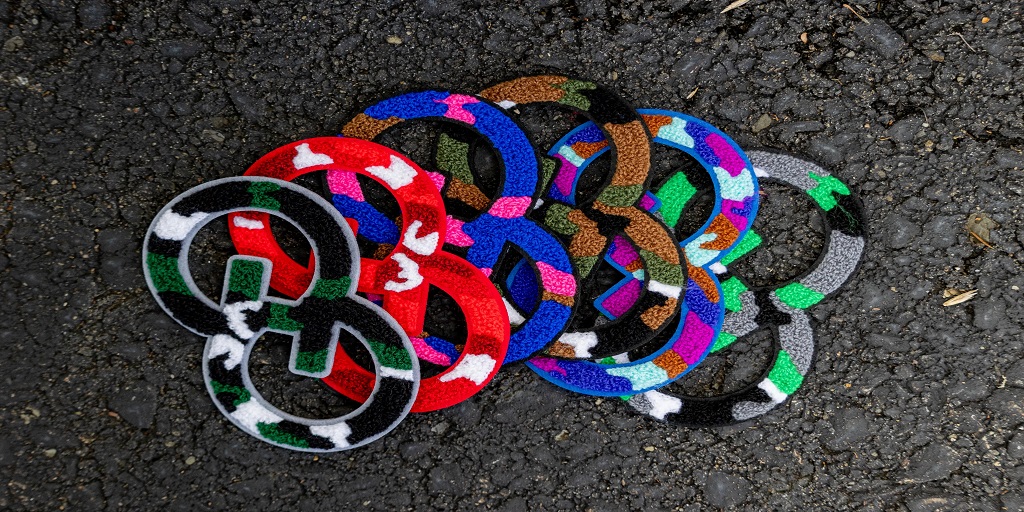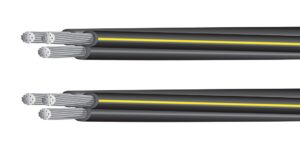
When it comes to decorating apparel, promoting a brand, or adding personality to everyday gear, patches are one of the most versatile tools available. Two of the most popular patch styles, chenille patches and embroidered patches, offer very different looks and textures. Choosing between the two depends on the aesthetic you’re going for, how the patch will be used, and what kind of statement you want to make.
What Are Chenille Patches?
Chenille patches are made using a looped yarn that gives them a soft, fuzzy, carpet-like texture. They’re best known for their use on varsity jackets, where large, colorful letters and numbers pop with bold texture. The name “chenille” comes from the French word for caterpillar: fitting, since the surface of a chenille patch is plush and fuzzy.
These patches tend to have a retro feel and are often associated with school spirit, athletics, Greek life, and nostalgic fashion. However, in recent years, chenille has been embraced by streetwear designers and lifestyle brands looking to add dimension and character to their garments.
What Are Embroidered Patches?
Embroidered patches are crafted with tightly stitched threads that form detailed designs, often with sharp lines, gradients, and lettering. These patches have a more classic look and are frequently used for military uniforms, workwear, company logos, and decorative fashion.
Embroidery creates a slightly raised surface but is generally flatter and finer in texture compared to chenille. It allows for more precise detail, making it ideal for complex logos or text-heavy designs.
Texture & Appearance: Bold vs. Detailed
One of the biggest differences between chenille and embroidered patches is texture.
- Chenille is thick, soft, and bold. The fluffy yarns create a tactile, dimensional effect. These patches stand out from a distance and are great for creating big, eye-catching elements. Think varsity letters, numbers, or initials.
- Embroidery offers a sleek and polished look. It can render intricate designs with high detail, making it a better choice for smaller graphics, text, or logos with many elements.
If you want something that really pops visually and physically, go with chenille. If precision and clarity are more important, embroidery wins.
Durability and Usage
Both chenille and embroidered patches are durable, but they behave differently over time.
- Chenille patches are thick and textured, but their soft yarns may wear down more quickly with frequent washing or heavy abrasion. They’re perfect for outerwear like jackets or backpacks that don’t get washed often.
- Embroidered patches, with their tight stitching and lower profile, tend to hold up better through repeated washing and wear. They’re better suited for uniforms, hats, and everyday clothing.
For heavy-use items or uniforms, embroidery might be the more practical choice. For statement pieces or casual wear, chenille adds flair without sacrificing too much longevity.
Customization and Style Preferences
When designing your patch, think about the overall aesthetic you want.
- Chenille patches are fun, nostalgic, and perfect for bold branding. They pair well with collegiate or vintage-inspired apparel and bring a playful, tactile quality to fashion pieces.
- Embroidered patches are versatile and professional. They suit a wide range of uses, from corporate branding to personal expression, and offer more design flexibility when it comes to detail.
If your project calls for personality and flair, chenille delivers a soft-yet-bold touch. If you need a refined, detailed design that communicates clarity and professionalism, embroidery is the way to go.
So, Which Should You Choose?
It all depends on your goals. Choose chenille if:
- You want a bold, eye-catching patch
- You’re decorating a varsity jacket or streetwear item
- You’re going for a nostalgic or collegiate look
Choose embroidery if:
- Your design requires fine detail or small text
- You need something more subtle or formal
- The patch will be used on items that get washed or worn often
Ultimately, both chenille and embroidered patches are excellent options for personalizing gear or promoting your brand. Whether you choose soft texture or sharp detail, the right patch can make an amazing addition to any piece of clothing or accessory.

